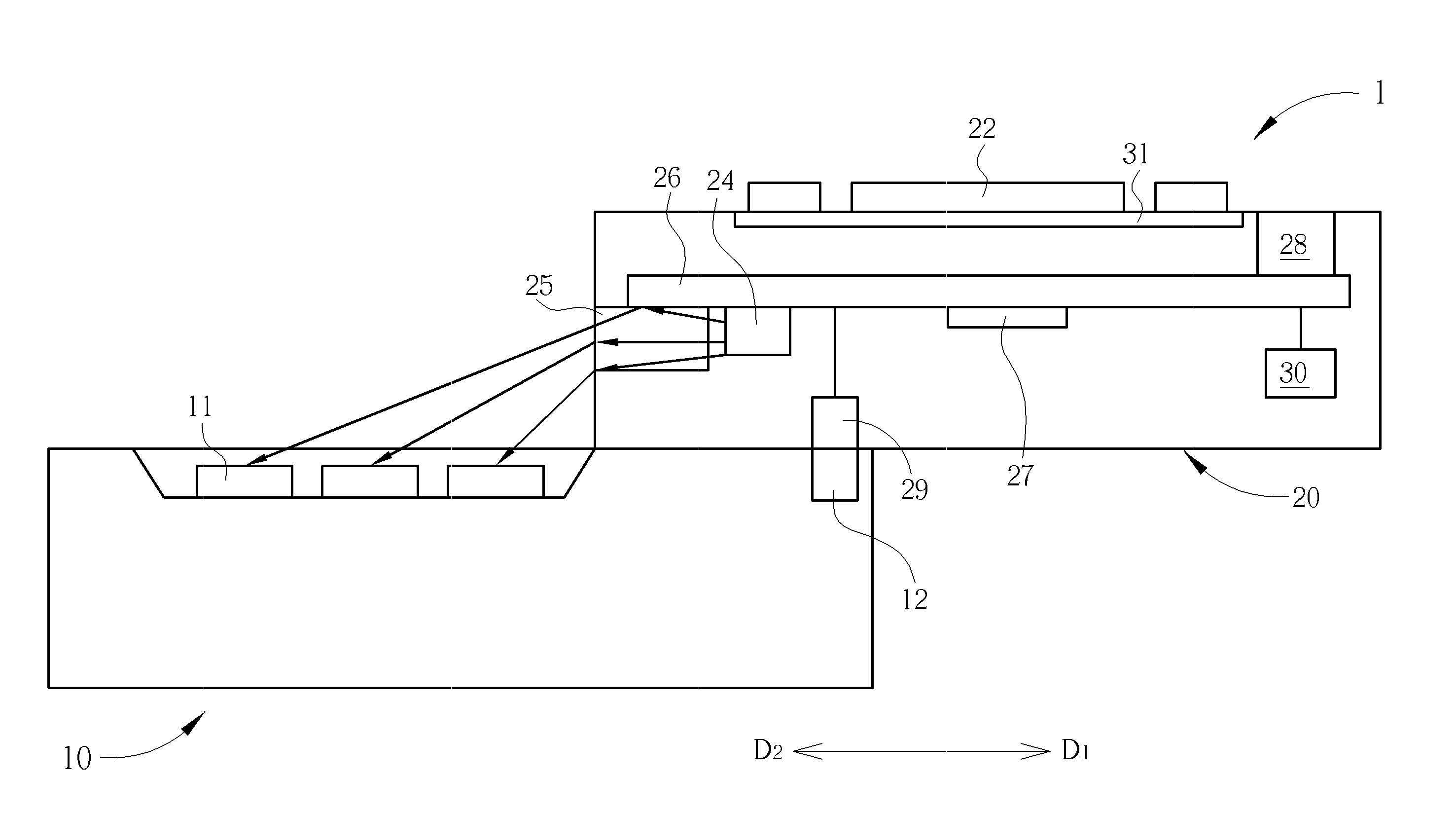Handheld device having lateral illumination for keypad
- Summary
- Abstract
- Description
- Claims
- Application Information
AI Technical Summary
Benefits of technology
Problems solved by technology
Method used
Image
Examples
Embodiment Construction
[0016]Please refer to FIG. 1. FIG. 1 is a schematic diagram of an embodiment of a handheld device 1 disclosed in the invention. The handheld device 1 is preferably a slider type remote controller that includes a first body 10 and a second body 20 capable of sliding with respect to each other. The first body 10 is in parallel slidable along direction D1D2 relative to the second body 20, to be closed or to be opened. When the first body 10 slides along direction Di relative to the second body 20 to be closed, the handheld device 1 has relatively small size and can be operated through the second body 20. When the first body 10 slides along direction D2 relative to the second body 20 to be opened, the first body 10 is exposed for full operation.
[0017]The first body 10 includes a first keypad 11, which has a plurality of buttons for complicated control, and the second body 20 includes a second keypad 22 and a display panel 23. Considering utility setup and convenience, the display panel ...
PUM
 Login to View More
Login to View More Abstract
Description
Claims
Application Information
 Login to View More
Login to View More - R&D
- Intellectual Property
- Life Sciences
- Materials
- Tech Scout
- Unparalleled Data Quality
- Higher Quality Content
- 60% Fewer Hallucinations
Browse by: Latest US Patents, China's latest patents, Technical Efficacy Thesaurus, Application Domain, Technology Topic, Popular Technical Reports.
© 2025 PatSnap. All rights reserved.Legal|Privacy policy|Modern Slavery Act Transparency Statement|Sitemap|About US| Contact US: help@patsnap.com



